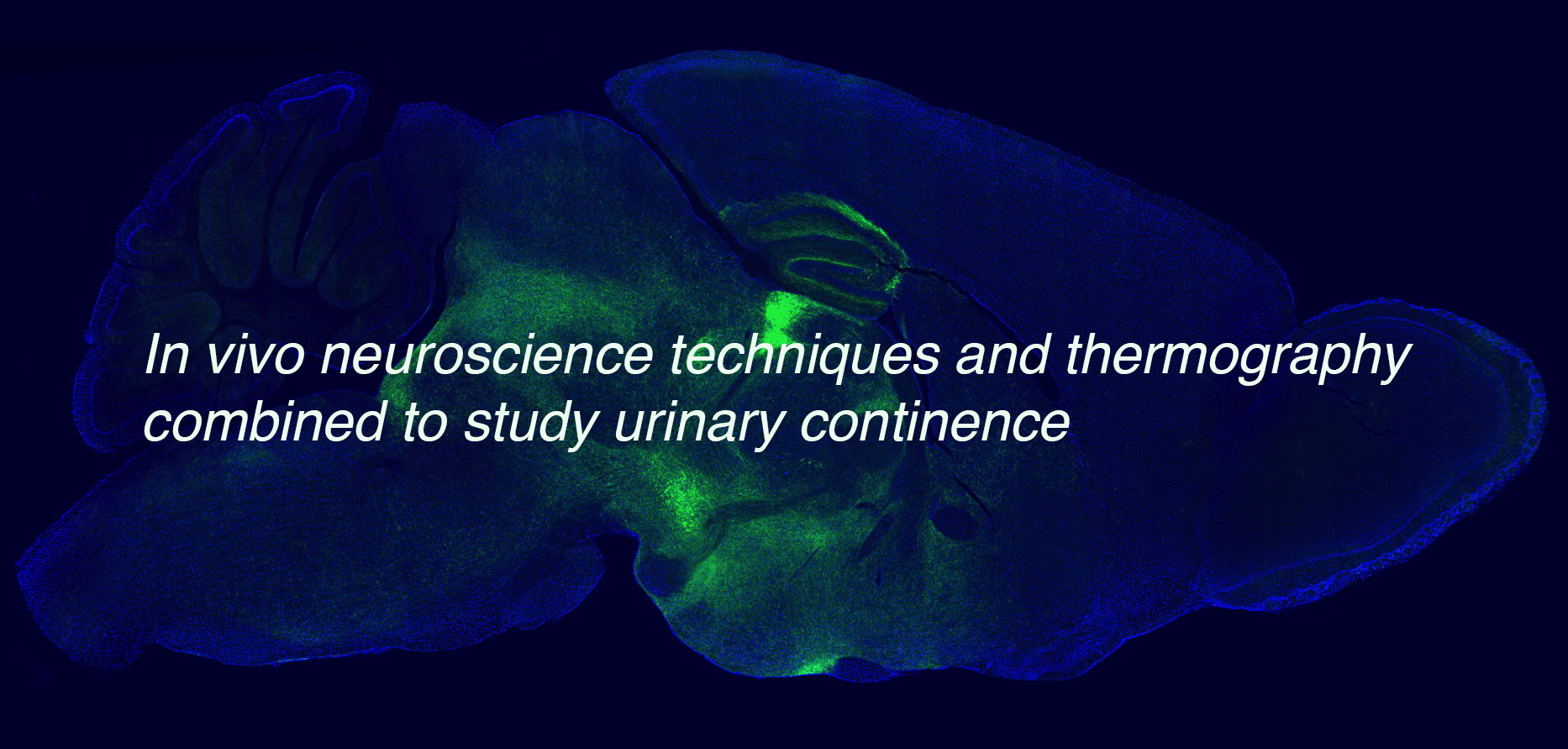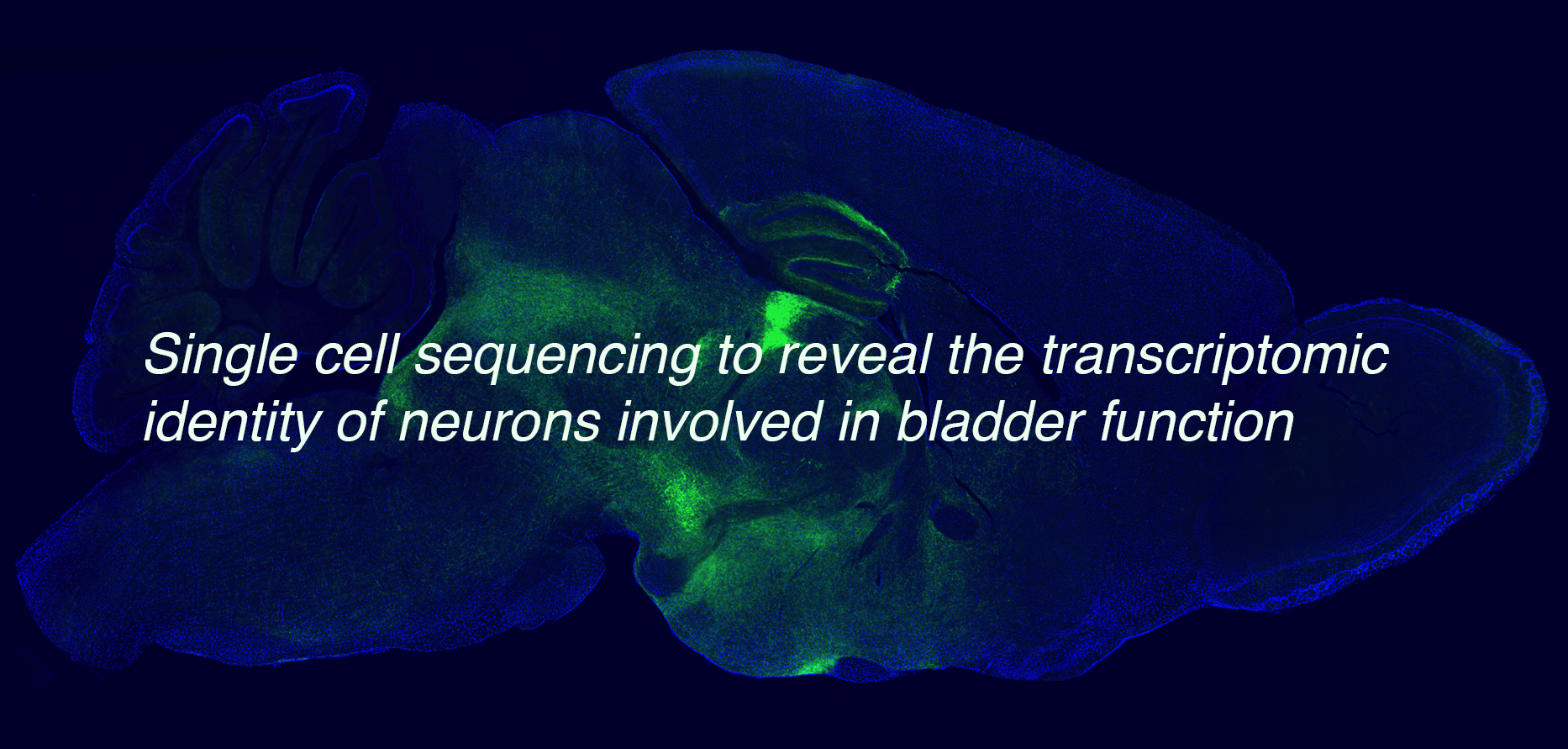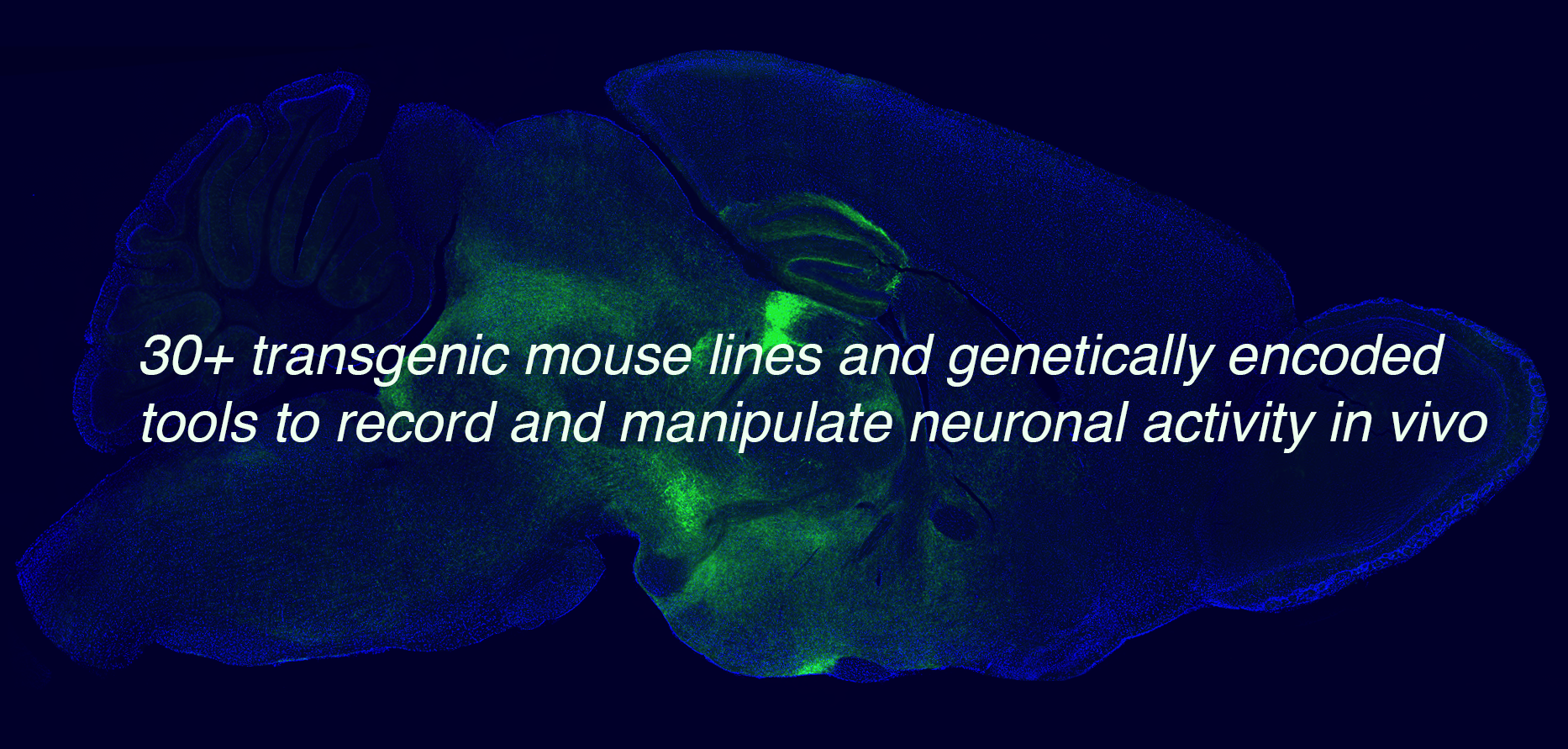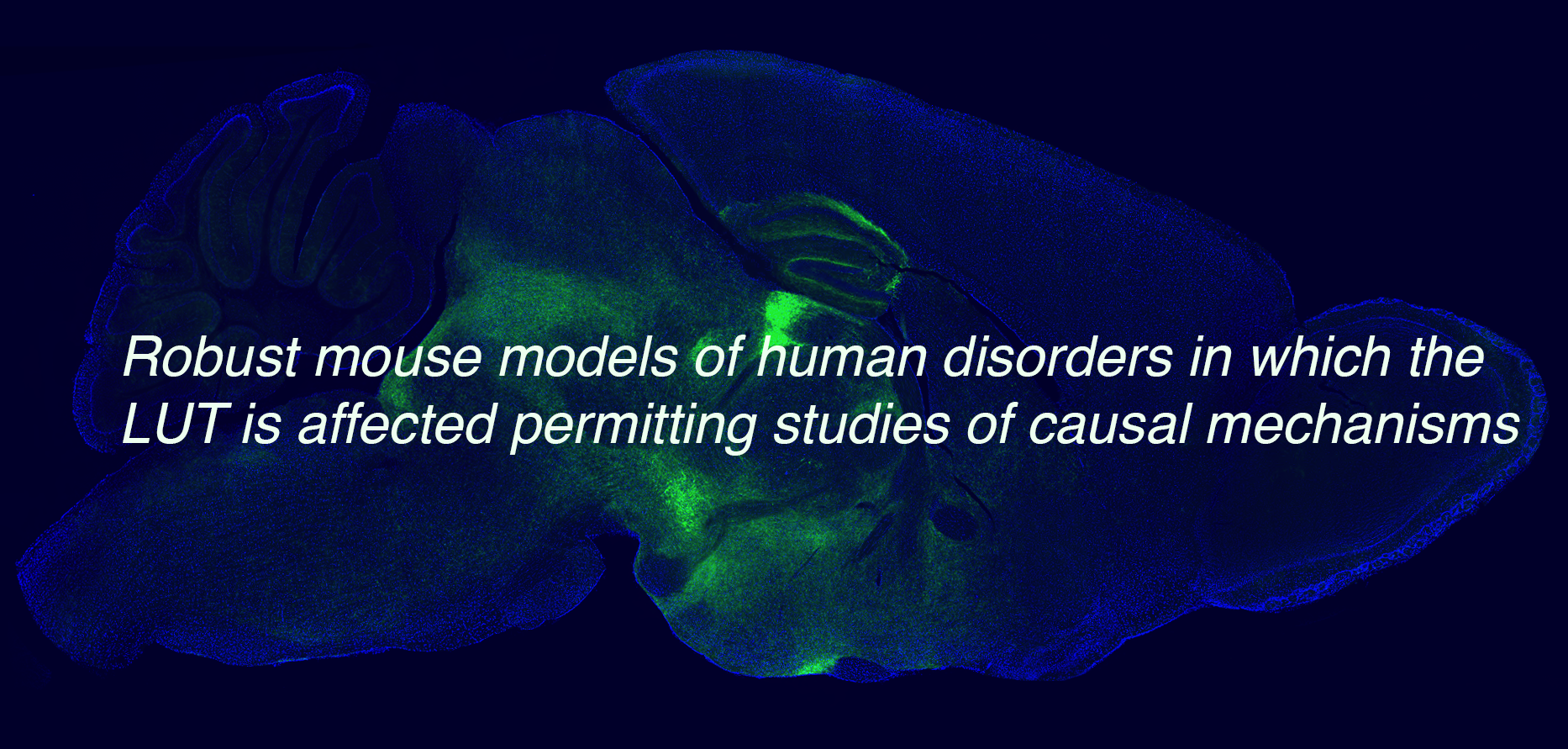Neural Circuits and Brainstem Control of LUT Function
Research Interests
We seek to understand how the brain controls the bladder.




Normal bladder function is controlled by neural circuitry in the brain and spinal cord. Bladder detrusor activity has been shown to be mediated by Barrington’s nucleus and the periaqueductal gray (PAG) regions of the brain. However, knowledge about the types of neurons involved in the micturition reflex, the neural innervation of these brain sites and mechanisms of action remain unclear.
Barrington’s nucleus (Bar) in the brainstem is postulated to be the motor-function-execution center that receives information from within the brain and that sends information to the spinal cord. Bar neuron axons extending from the brain connect to preganglionic parasympathetic motoneurons to coordinate the bladder muscles. In order to dissect the functional neural circuits, we use neuroscience technology to activate or silence specific neuronal populations and study the effects of interventions on neuronal activity patterns and micturition behaviors.
Our research aims to answer questions such as:
* What is the interoceptive signal that your bladder is full? How does this signal get ‘converted’ to motor action? And, which neurons are critical for these processes?
* Which neurons make up and are active in the micturition reflex pathway? What controls the neurons in Barrington’s nucleus to become active or to not activate (i.e. to pee or not pee)?
* What are the different subtypes of neurons in Barrington’s nucleus in the brainstem, and what are their specific roles in regulating behaviors? How can urination be prevented, voluntarily (i.e., when it is not the right time)?
* The lower urinary tract (LUT) is differently innervated in biological males vs in females. What are the specific neurocircuits that underlie sex-specific control over LUT function? Determine the effects of hormone signaling - at specific levels of the brain-bladder axis) - on LUT function, and in male and female.
Disturbances in the central nervous system control of bladder and sphincter function can cause or contribute to lower urinary tract dysfunction (LUTD), therefore, understanding the control circuits is central to the identification of new cellular and molecular targets which in turn will inform the development of newer and clinically practical drugs.